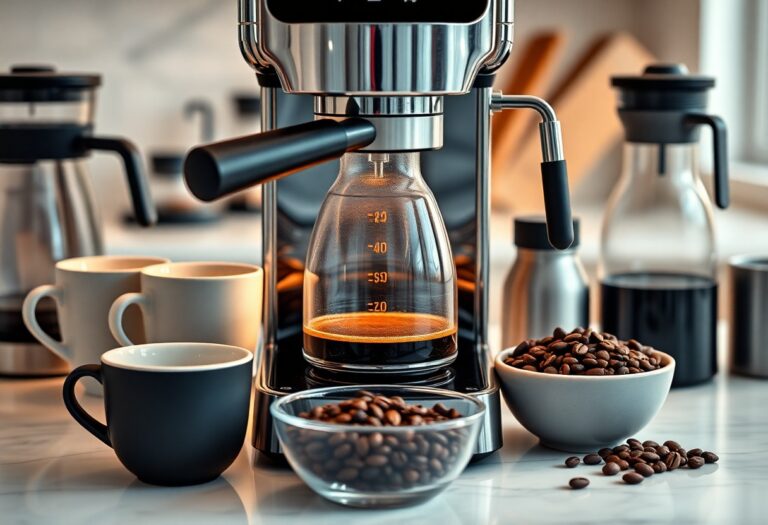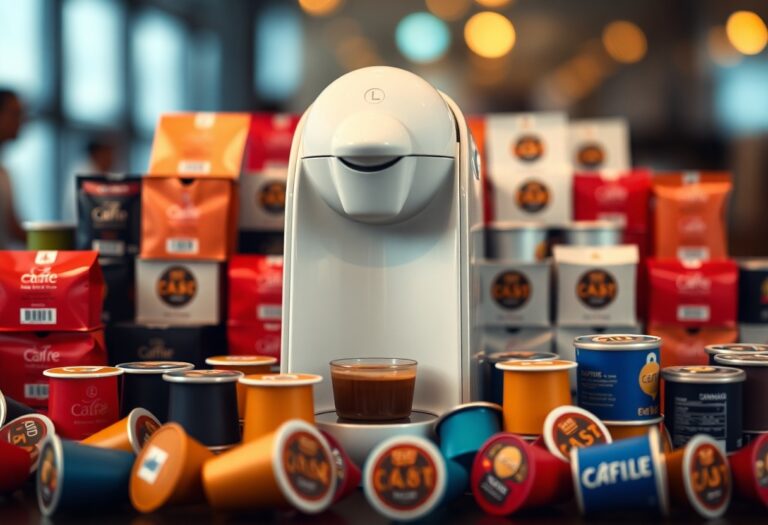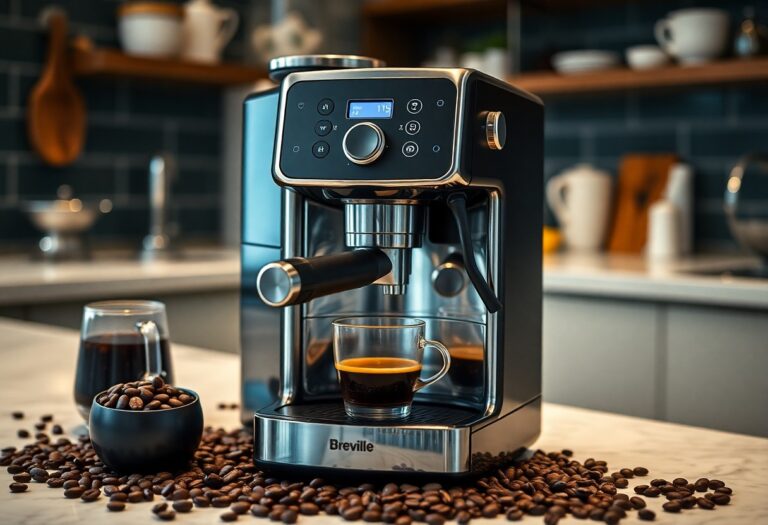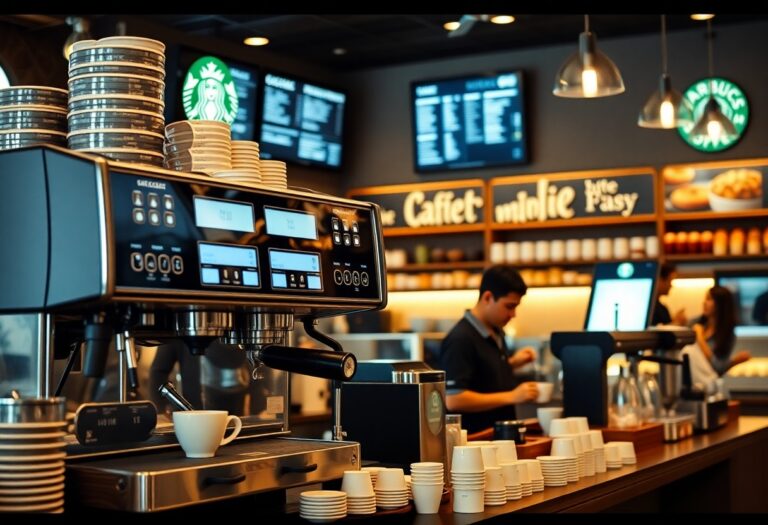What Coffee Machine is Best for Me – Personal Selection
There’s a world of options when it comes to choosing the perfect coffee machine for your needs. Whether you’re seeking a quick brew to kickstart your mornings or a barista-style experience at home, identifying your ideal coffee machine can significantly enhance your daily routine. In this guide, we will explore various types of coffee machines, highlighting their features, benefits, and potential drawbacks, allowing you to make an informed decision that suits your lifestyle and budget. Let’s dive in!
Key Takeaways:
- Assess your brewing preferences: Consider whether you prefer espresso, drip coffee, or specialty drinks to narrow down your options.
- Evaluate your available space: Choose a coffee machine that fits comfortably in your kitchen, taking into account both size and counter space.
- Budget considerations: Determine how much you are willing to spend, as prices can vary significantly across different types of machines.
- Consider ease of use and maintenance: Look for a machine that suits your skill level and requires manageable upkeep to ensure enjoyment.
- Research features: Popular options include programmable settings, built-in grinders, and milk frothers, so choose the features that align with your coffee preferences.

Defining Your Coffee Preferences
Your personal taste significantly influences the type of coffee machine that will suit you best. Consider whether you crave a bold espresso, a smooth cold brew, or a classic drip coffee. Knowing your preferred coffee style helps narrow down your options, as each brewing method can highlight different flavors and textures. Reflect on your past coffee experiences to identify what you enjoy most, as this will guide you in selecting the right machine to fulfill those desires.
Flavor Profiles and Brewing Methods
Each coffee brewing method extracts flavors differently, resulting in unique profiles. For instance, a French press delivers a full-bodied coffee with a rich taste, while pour-over techniques provide clarity and brightness. Espresso machines create concentrated shots that showcase deep, intense flavors, ideal for latte lovers. Understanding these nuances helps you pair your preferred flavor profile with the appropriate brewing method for an optimal coffee experience.
The Role of Freshness and Grind Size
Fresh coffee beans are imperative to achieving a vibrant cup. The grind size directly affects the extraction process, influencing flavor and aroma. For instance, a coarse grind is suited for French press brewing, while fine grounds work best for espresso machines. As coffee stales, it loses imperative oils and flavors, making grind size and freshness pivotal in creating the perfect brew. To ensure quality, always grind beans just before brewing and invest in a good burr grinder for optimal consistency.
Delving deeper, the standard recommendation is to consume coffee within 2-4 weeks of roasting for maximum flavor retention. The grind size should match your brewing method closely; an espresso grind, for example, is typically measured at a fine consistency, while something like a pour-over requires a medium grind. This is not just a matter of taste—over-extraction from too-fine a grind can lead to bitterness, whereas under-extraction from a too-coarse grind can yield sourness. By choosing fresh beans and the right grind size, you’ll amplify your coffee’s potential and indulge in richer flavors every morning.

The Spectrum of Coffee Machines: What’s Out There?
Exploring the range of coffee machines reveals a vast landscape for every coffee lover. From classic drip brewers to advanced espresso machines, today’s options cater to all preferences. You might find The Best Espresso Machine alongside budget-friendly pod systems. Regardless of your brewing style, there’s a coffee machine on the market designed to enhance your experience, making it easier than ever to brew your perfect cup.
Manual, Semi-Automatic, and Fully Automatic Options
Choosing between manual, semi-automatic, and fully automatic machines impacts your brewing experience significantly. Manual machines provide complete control over the brewing process, ideal for hands-on enthusiasts looking to master their craft. Semi-automatic machines offer a blend of convenience and control, allowing you to adjust brewing variables while still automating some processes. Fully automatic options handle almost everything for you, making them perfect for those who want quality coffee without the fuss.
Single-Serve Machines vs. Traditional Brewers
Single-serve machines and traditional brewers cater to different lifestyles and preferences. Single-serve options are perfect for quick, customizable brews, allowing for many flavor choices without making an entire pot. Traditional brewers excel in delivering larger quantities of coffee, ideal for gatherings or daily use where multiple cups are needed. Your choice will depend on how you typically enjoy coffee and the number of servings you generally need.
Single-serve machines utilize pods or capsules, providing ease of use and versatility with various flavor options. Convenience is a significant factor, especially for busy individuals or those who drink coffee infrequently. You can brew a single cup without the hassle of extensive cleanup and effort. In contrast, traditional brewers are often more cost-effective in the long run and can produce a fresher taste since you use whole beans or ground coffee. They cater to coffee enthusiasts who enjoy experimenting with grind sizes and brewing times, thus providing a richer and more controlled coffee experience.
Budgeting for Your Brew: Cost Considerations and Value
Establishing a budget for your coffee machine is necessary. Pricing can range drastically from affordable single-serve options around $30 to high-end espresso machines exceeding $2,000. Understanding how much you’re willing to invest will guide your selection and ensure you find a model that not only fits your lifestyle but also offers the best value based on your coffee consumption habits.
Initial Investment vs. Long-Term Costs
Considering the initial purchase price is just one part of the equation. Long-term costs, including maintenance, coffee beans, filters, and electricity, can significantly impact the total expenditure. For example, a high-quality espresso machine might seem steep upfront but could save you considerably over time by reducing trips to coffee shops and delivering a superior brew right at home.
Features That Justify Price Tags
Many coffee machines come equipped with features that elevate the brewing experience and can justify higher price points. For instance, advanced machines may boast programmable settings, temperature control, and integrated grinders, all of which contribute to achieving that perfect cup. Also, machines with durable materials and superior components often promise better longevity and performance, making them worthwhile investments in the long run.
When analyzing features, look for specific benefits that align with your coffee preferences. For instance, programmable timers allow you to wake up to the aroma of freshly brewed coffee, saving you precious morning minutes. Machines with built-in grinders, like the Breville Barista Express, not only deliver enhanced freshness but also eliminate the need for additional equipment, simplifying your setup. Brands like De’Longhi or Jura may carry a heftier price tag but often include specialized features like milk frothers or dual boilers, which can transform your home coffee experience into a café-level indulgence.
Space and Design: Finding the Right Fit for Your Kitchen
Your kitchen’s design and layout significantly impact your coffee experience. Identifying a coffee machine that suits your space not only enhances functionality but also complements the overall aesthetic. Consider countertops, cabinetry, and color schemes to ensure your machine harmonizes with the environment while also being easily accessible.
Size, Aesthetics, and Placement
Evaluating the dimensions of your kitchen and countertop space is vital to select a coffee machine that won’t overwhelm the area. Compact models are ideal for smaller kitchens, fitting neatly on countertops without compromising style. Matching the machine’s aesthetic appeal, whether modern stainless-steel or vintage-style, will create a cohesive look, elevating your kitchen’s atmosphere.
User-Friendly Features for Everyday Use
Simplicity greatly enhances your daily coffee experience. Look for machines with intuitive interfaces, programmable settings, and quick brewing times. Features like built-in grinders, automatic shut-off, and easy-to-read displays can streamline your morning routine, making it simple to enjoy quality coffee consistently.
A user-friendly coffee machine makes all the difference during hectic mornings. A model with a one-touch brewing option or a customization feature allows you to adjust strength and volume with ease. Additionally, machines with clear, backlit displays enhance visibility, while removable components for easy cleaning save you valuable time. These features not only simplify brewing but also ensure that you can enjoy a delicious cup of coffee, hassle-free, every day.
Navigating Reviews and Recommendations: What to Trust?
Sorting through the vast sea of online reviews can feel overwhelming, but honing in on credible sources is key. Look for established platforms or expert blogs that focus specifically on Choosing The Right Coffee Maker. Authentic reviews from fellow coffee enthusiasts often reveal insights that manufacturer descriptions don’t cover. Always stay vigilant for reviews that provide detailed experiences rather than vague impressions, as specific feedback helps you understand potential strengths and weaknesses of the coffee machines on your radar.
Understanding Expert and User Reviews
Expert reviews offer a wealth of information, as professionals in the coffee industry often test and evaluate machines based on performance, longevity, and brewing consistency. User reviews complement this by providing real-life insights into ease of use and maintenance. Notably, discerning which points are repeatedly mentioned can guide you toward making a more informed decision.
Trial and Error: Return Policies and Sample Brews
Taking advantage of return policies is a savvy approach when selecting a coffee machine. Many retailers allow returns within a specific timeframe, enabling you to test a machine at home. Sample brews from friends or at specialty coffee shops offer a practical, hands-on opportunity to assess various models without a commitment. This way, you can ensure that the machine aligns with your taste preferences and brewing style.
Exploring return policies is imperative to making a risk-free purchase. If you’re not satisfied with your coffee maker, returning it should be straightforward. Retailers often provide a window for returns, typically between 30 to 90 days. Additionally, don’t hesitate to attend coffee expos or local tastings, where you can try different brews. Engaging with fellow coffee lovers can yield recommendations and firsthand experiences, helping refine your choice before making that investment.
To wrap up
With this in mind, selecting the best coffee machine for you involves understanding your brewing preferences, lifestyle, and budget. Whether you enjoy the elegance of espresso, the simplicity of drip coffee, or the convenience of single-serve systems, there’s a perfect match for your taste. Evaluate features, ease of use, and maintenance to ensure that your choice aligns not only with your coffee style but also enhances your daily routine. By making an informed decision, you can enjoy the perfect cup every time.
FAQ
Q: What factors should I consider when choosing a coffee machine?
A: When deciding on a coffee machine, consider the following factors: your brewing preferences (espresso, drip, French press, etc.), the ease of use and cleaning, the size of the machine (will it fit in your kitchen?), your budget, and the type of coffee you enjoy (whole beans vs. ground). Additionally, think about whether you want a single-serve option or a machine that can brew larger quantities.
Q: What is the difference between automatic and manual coffee machines?
A: Automatic coffee machines control the brewing process for you, often with the push of a button. They typically offer features like programmable settings and built-in grinders. Manual machines, such as French presses or pour-over brewers, require more hands-on involvement and skill to achieve the perfect brew. Your choice will depend on how much time you want to spend and your personal brewing skills.
Q: Do I need a grinder if I get an espresso machine?
A: While some espresso machines come with a built-in grinder, you can also choose a separate stand-alone grinder. Freshly ground coffee is key to making a great espresso, so investing in a good grinder is beneficial. If your espresso machine doesn’t have one, opt for a burr grinder for consistent grind size, which is imperative for espresso extraction.
Q: Is a single-serve coffee maker a good option for daily use?
A: Single-serve coffee makers can be an excellent choice for those who prefer convenience and variety. They allow for quick brewing times and eliminate the need for extra cleanup, as you typically use pods or capsules. However, if you drink multiple cups a day or have guests, consider a machine that can brew larger quantities to save time and resources.
Q: How do I determine the right coffee machine for my budget?
A: Start by determining how much you are willing to invest in a coffee machine. Prices can range from affordable to high-end, depending on features and functionalities. Assess the features that matter most to you and weigh their importance against your budget. Doing research and reading reviews can help you find the best options within your price range that meet your brewing needs.







